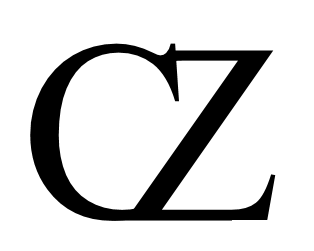| (5 intermediate revisions by the same user not shown) | |||
| Line 3: | Line 3: | ||
|Image= |
|Image= |
||
|Category=[[Giant bear]]<br>[[Sea monster]] |
|Category=[[Giant bear]]<br>[[Sea monster]] |
||
| − | |Names=''K'ok'satkut, kochatko, kogogiak, kokogiak, kukuweaq, qoqogaq, qoqogiaq'' |
+ | |Names=''K'ok'satkut, koča'tko, kočátko, kochatko, kogogiak, kokogiak, kukuweaq, qoqogaq, qoqogiaq'' |
| − | |Location={{Russia}}, |
+ | |Location={{Russia}}, [[:Category:United States|U.S.]] ({{Alaska}}) |
|Reported=1953 |
|Reported=1953 |
||
}} |
}} |
||
| − | The '''''qupqugiaq''''' is a [[cryptid]] [[giant bear]] reported from the [[:Category:Bering Sea|Bering]] and {{Beaufort Sea}} coasts of western {{Alaska}}{{Eberhart}}{{WeatherlyAlaska}} and eastern {{Russia}},<ref name="Engelhard">Engelhard, Michael (2017) ''Ice Bear: The Cultural History of an Arctic Icon''</ref> usually described as an enormous polar bear (''Ursus maritimus'') with six, eight, or ten legs,<ref name="Eberhart"/><ref name="Engelhard"/> although sometimes it was said to have only four legs.<ref name="Engelhard"/> The Inuit of Alaska claimed occasional sightings of this animal, generally only of the head.<ref name="Jenness">Jenness, Diamond "Stray Notes on the Eskimo of Arctic Alaska," ''Anthropological Papers of the University of Alaska'', Vol. 1, No. 2 (May 1953)</ref> |
+ | The '''''qupqugiaq''''' is a [[cryptid]] [[giant bear]] reported from the [[:Category:Bering Sea|Bering]] and {{Beaufort Sea}} coasts of western {{Alaska}}{{Eberhart}}{{WeatherlyAlaska}} and eastern {{Russia}},{{Arment2010}}<ref name="Engelhard">Engelhard, Michael (2017) ''Ice Bear: The Cultural History of an Arctic Icon''</ref> usually described as an enormous polar bear (''Ursus maritimus'') with six, eight, or ten legs,<ref name="Eberhart"/><ref name="Engelhard"/> although sometimes it was said to have only four legs.<ref name="Engelhard"/> The Inuit of Alaska claimed occasional sightings of this animal, generally only of the head.<ref name="Jenness">Jenness, Diamond "Stray Notes on the Eskimo of Arctic Alaska," ''Anthropological Papers of the University of Alaska'', Vol. 1, No. 2 (May 1953)</ref> |
==Attestations== |
==Attestations== |
||
| − | The ''qupqugiaq'' was described by Canadian anthropologist Diamond Jenness (1886 – 1969), who collected notes on it and the [[walrus dog]] during his years living the western Inuit.<ref name="Jenness"/> In Siberia, the same being was known as ''kochatko'' |
+ | The ''qupqugiaq'' was described by Canadian anthropologist Diamond Jenness (1886 – 1969), who collected notes on it and the [[walrus dog]] during his years living with the western Inuit.<ref name="Jenness"/> In Siberia, the same being was known as ''kochatko'' to the Chukchi people and ''k'ok'satkut'' to the Siberian Yupiks.<ref name="Engelhard"/> |
==Description== |
==Description== |
||
| Line 21: | Line 21: | ||
{{reflist|2}} |
{{reflist|2}} |
||
[[Category:Cryptids]] |
[[Category:Cryptids]] |
||
| + | [[Category:Sea serpents]] |
||
[[Category:North America]] |
[[Category:North America]] |
||
[[Category:United States (Alaska)]] |
[[Category:United States (Alaska)]] |
||
| Line 28: | Line 29: | ||
[[Category:Arctic Ocean]] |
[[Category:Arctic Ocean]] |
||
[[Category:Beaufort Sea]] |
[[Category:Beaufort Sea]] |
||
| − | [[Category: |
+ | [[Category:Bears]] |
Revision as of 11:05, 3 September 2021
| ||||||||||||
The qupqugiaq is a cryptid giant bear reported from the Bering and Beaufort Sea coasts of western Alaska[1][2] and eastern Russia,[3][4] usually described as an enormous polar bear (Ursus maritimus) with six, eight, or ten legs,[1][4] although sometimes it was said to have only four legs.[4] The Inuit of Alaska claimed occasional sightings of this animal, generally only of the head.[5]
Attestations
The qupqugiaq was described by Canadian anthropologist Diamond Jenness (1886 – 1969), who collected notes on it and the walrus dog during his years living with the western Inuit.[5] In Siberia, the same being was known as kochatko to the Chukchi people and k'ok'satkut to the Siberian Yupiks.[4]
Description
The qupqugiaq resembles a polar bear (Urus maritimus), the largest known terrestrial predator, but is said to be far larger and stronger, capable of breaking through ice "as thick as a man is tall,"[5] with a head up to 5' long.[1] It is usually alleged to have several legs–six, eight, or ten–but is sometimes said to have just four limbs, being defined by its great size.[4] Like the polar bear, it is semiaquatic and dwells on sea-ice, and is feared for ambushing boats. To lure in hunters, it supposedly lays on its back and waves its legs in the air, wailing in distress.[5] It can also crow like a raven.[4]
Sightings
A native of Wales, who was then living near Point Barrow, told Jenness that he had once seen a qupqugiaq, alleging that "the distance between its ears [was] the full stretch of a man's two arms".[5] Jenness also heard that a party travelling east from Point Barrow in Autumn 1913 had seen a qupqugiaq, which poked its head through the ice to look at them. The men thought the ice was too thin to hold the qupqugiaq's great weight, but hurried back home anyway.[5][1]
Notes and references
- ↑ 1.0 1.1 1.2 1.3 Eberhart, George M. (2002) Mysterious Creatures: A Guide to Cryptozoology, ABC-CLIO, Inc., ISBN 1576072835
- ↑ Weatherly, David (2020) Monsters of the Last Frontier: Cryptids & Legends of Alaska, Leprechaun Press, ISBN 978-1945950155
- ↑ Arment, Chad (2010) Varmints: Mystery Carnivores of North America, Coachwhip Publications, ISBN 978-1616460198
- ↑ 4.0 4.1 4.2 4.3 4.4 4.5 Engelhard, Michael (2017) Ice Bear: The Cultural History of an Arctic Icon
- ↑ 5.0 5.1 5.2 5.3 5.4 5.5 Jenness, Diamond "Stray Notes on the Eskimo of Arctic Alaska," Anthropological Papers of the University of Alaska, Vol. 1, No. 2 (May 1953)
